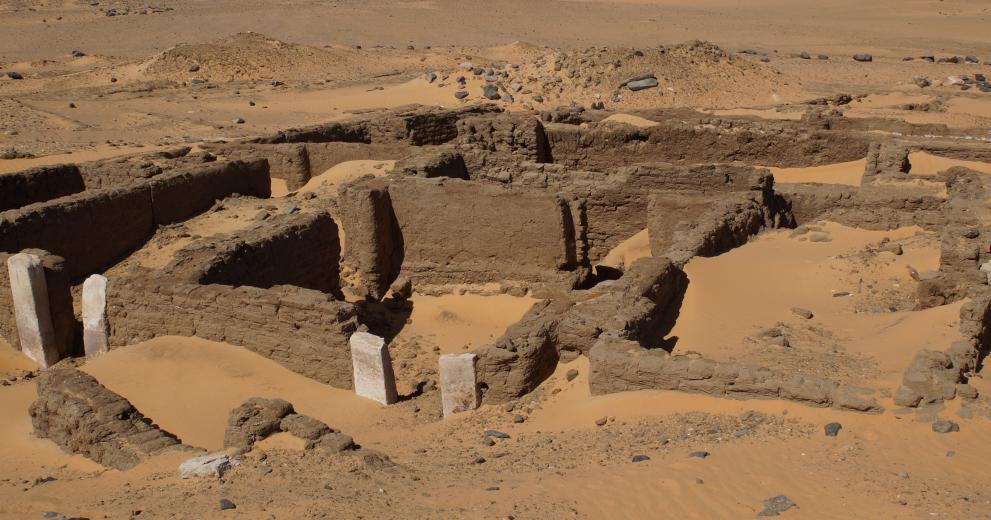Amara West is the modern name of an Egyptian town on the right bank of the Nile, about 100 kilometres south of the Second Cataract, opposite the present-day town of Abri. The ancient town was founded under Pharaoh Seti I in the early Ramesside period (c. 1300 BC), i.e. the later part of the New Kingdom. It became the administrative centre of the southern part of the New Kingdom Nubian province, often called Upper Nubia or Kush, i.e. roughly the area between the Second Cataract in the north and Jebel Barkal in the south.
During the time of its use, Amara West was situated on an island, with a river channel north of it, which has since dried up. Its mudbrick enclosure wall measures 108 metres on each side. It has two gates, in the north and the west. Most of the buildings in the town were of mudbrick with only the door jambs, thresholds and lintels being executed in sandstone. The town was lived in for about 200 years and the buildings saw considerable rearrangement and refurbishment. Four major occupational phases have been differentiated.
The northwestern corner was occupied by the residence of the Deputy of Kush, i.e. the governor of the southern part of the Nubian province, the highest official in the town. The northeastern corner houses the temple of Amun – the only structure built of sandstone. Its construction probably started under Seti I, but its decoration was mostly executed under his successors. The temple has a typical New Kingdom layout with a peristyle court, a hypostyle hall and three cult chapels at the rear. It has been completely covered under spoil from the excavation, primarily to protect it from the heavy wind erosion prevailing at the site..
Recent excavations undertaken by a mission from the British Museum expanded onto the so-called Western suburb, outside the walled area. Founded about 100 years after the onset of the town, it comprised several spacious villas which preserved many installations and objects of their primary occupation. A highly unusual find was a number of garden plots laid out between the buildings.
Amara West also comprises two cemetery areas north of the dried up river channel. Both are contemporary with the town. Above-ground preservation is poor, but some tombs on a rocky escarpment in the northwest originally featured mudbrick superstructures in the shape of chapels with small pyramids attached, a downscaled version of the elite tomb architecture found at Tombos, Soleb and Sai. Remarkably, in the northeastern cemetery, at least one tomb has a circular burial mound, signalling indigenous funerary traditions, but in this case they are associated with Egyptian-style burials. Both cemeteries continued in use until the onset of the Napatan period, i.e. the 8th century BC. While this indicates that Amara itself was occupied into this era, no corresponding architectural remains have yet been identified in the town.
